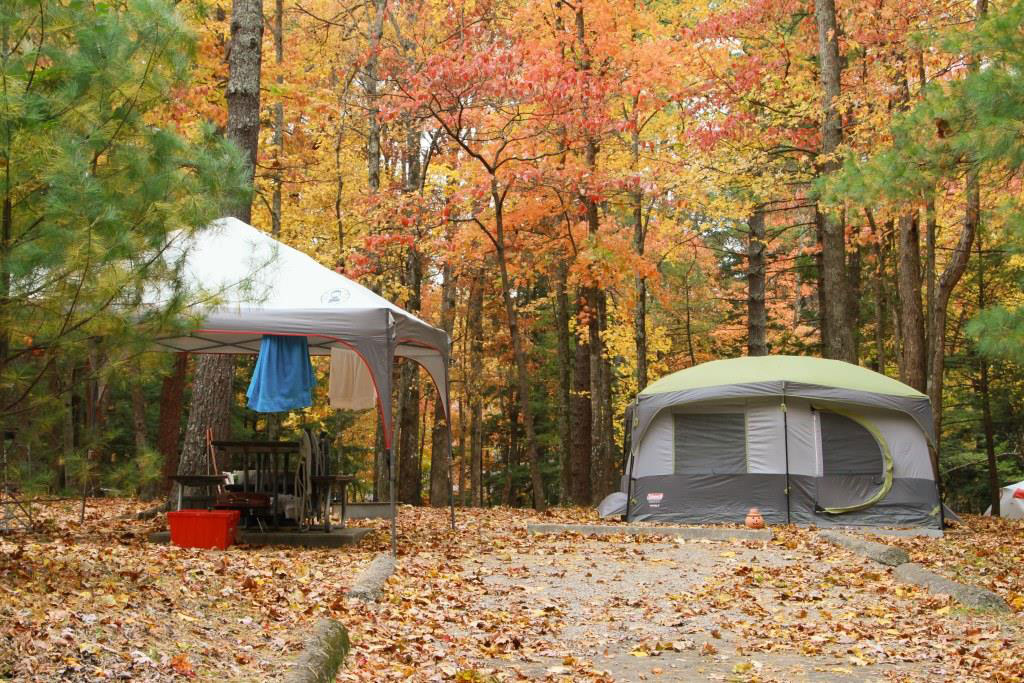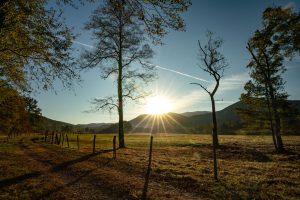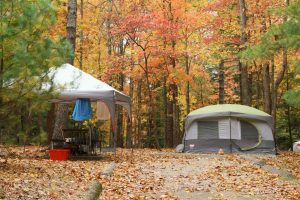
Editor’s Note: This essay is part of a series written during Railback’s stay in the park from June 22 to August 4, 2023.
At this Great Smoky Mountains National Park apartment that I call Second Acts, dusk is the time for camp walks. The stream of cars leaving Cades Cove Loop Road thins out. As the sun sets, the humid summer heat evaporates, and the fireflies rise from the shrubs and grasses. The air fills with the inviting smell of campfires.

I stroll by the string of blue-purple LED lights around Wayne Corey’s camper. He is one of the volunteer camp hosts who helps people understand how the place operates, answers countless questions, and occasionally shoos away bears. Who knows what time he will get back from his duties tonight.
As a Volunteer-In-Park (VIP), Wayne is essential. According to Sheridan Roberts, Parkwide Volunteer Program Coordinator, 2,119 VIPs collectively provided 114,487 service hours in 2022.
“Volunteers-In-Park exponentially increase the quantity and quality of visitor services and resource stewardship in America’s most visited National Park,” Roberts says. “They’re integrated into nearly every aspect of operations including safety, education, outreach, research, and facilities upkeep. Giving of their time, talent and vision in many meaningful and enduring ways helps ensure support for the future of our beloved park.”
Now I step onto the camp road and into a transient village filled with marvelous inventions of the 21st century: land cruisers with all the amenities, simpler RVs, micro campers, and miraculous pop-up tents perched on top of vehicles. Strings of amber lights, welcome flags, and small portable solar farms abound.
For all the modern gadgetry on display, the campground feels like a neighborhood from a half-century ago. Out in the narrow lanes, kids play pick-up softball or touch football games or run foot races. By the light of a campfire a woman reads a book. A family laughs over a board game. Everywhere people talk with each other, dusting off old family stories or sharing new tales of the day’s wilderness adventures.

A great extended family from India—several generations represented—sits on 20 folding chairs arrayed in a vast semicircle. They carry on a multilayered conversation in a language I do not understand. I hang back a moment in the twilight shadow, wishing I could join them.
I rarely see a device or a screen or the normally ubiquitous cell phone. These things seem dead here. It is fascinating to see how people come alive as a result.
The road is almost dark and here comes an excited man to warn my wife and I that a black bear has been sighted nearby. He rushes on to tell others. I am learning that nothing energizes people around here like a bear. I hope for the animal’s sake that it has safely ambled off into the woods. (Later, Wayne will confirm that it did.)
We come upon a mob of kids, at least a half dozen of them, ages nine to 13. They have been tearing around the camp on their bicycles, playing a wild game of mobile hide and seek. Here they pause briefly to go over how the rules change with the coming dark. They do not have lights, so I imagine they will have to ride by the glow of campfires.
I tell the pack that a bear might be prowling around the edges of camp.
“A bear!” A wide-eyed 10-year-old boy with a thatch of long blonde hair looks around.
The 13-year-old girl gets in position to go, her leg flexing on the pedal.
They all gather around as I answer questions about the bear. My cautions go up into thin air.

Off they go. They screech and holler at each other with glee, because now the game has become hide and seek with a bear. I hope not. Yet I may as well be back in my old neighborhood in Los Angeles in the 1960s, for these kids have reacted to a bear sighting exactly as my old street gang would have.
They ride on, abandoning all logic and fear, navigating by the wild stars of their imaginations.
They are my heroes.
In 1836, Ralph Waldo Emerson published Nature, a little book that became a blueprint for the Romantic impulse that still lives in the United States of America. His chapters enumerate the benefits of Nature to one’s health, imagination, intellect, virtue, and soul. Emerson encouraged people to leave their toxic cities and hard-bitten professions to discover the natural world. “In the woods is perpetual youth,” he writes, and it is there that “we return to reason and faith.”
So, no matter what weather, I walk the campground at Cades Cove. Magic happens here every evening. People come from many miles for a few days in a fleeting neighborhood where the AI is switched off, devices go dark, and faces are lit by the light of the ancient wood fire.
I know we have come here for the grand mountains and the forests and the brief encounters with wildlife. But walking the camps, I see we seek something just as vital.
We are here to escape the filtered view through electrified screens. We come to encounter each other, face to face.
Subscribe to get the latest posts sent to your email.
The Great Smokies Welcome Center is located on U.S. 321 in Townsend, TN, 2 miles from the west entrance to Great Smoky Mountains National Park. Visitors can get information about things to see and do in and around the national park and shop from a wide selection of books, gifts, and other Smokies merchandise. Daily, weekly, and annual parking tags for the national park are also available.